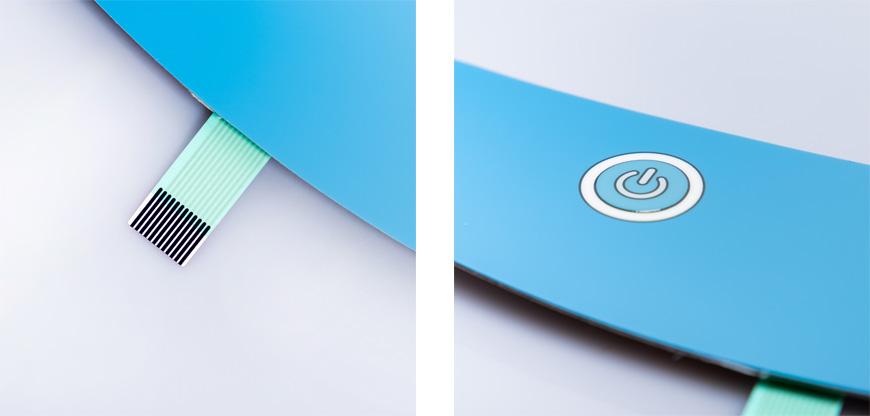
In today's fast-paced world, technological advancements have become an integral part of our daily lives. One such innovation that often goes unnoticed but plays a crucial role in various electronic devices is the single membrane switch. These unassuming components serve as the interface between users and their devices, allowing for seamless interactions. In this article, we will delve into the world of single membrane switches, exploring their construction, applications, advantages, and much more.

1. Introduction
2. Understanding Membrane Switches
What Is a Membrane Switch?
Types of Membrane Switches
3. Single Membrane Switches: A Closer Look
Structure and Components
How They Work
4. Applications of Single Membrane Switches
Consumer Electronics
Industrial Equipment
Medical Devices
5. Advantages of Using Single Membrane Switches
Durability and Longevity
Cost-Effectiveness
Customization Options
6. Challenges and Considerations
Environmental Factors
Design Complexity
7. Future Trends
8. Conclusion
9. FAQs
Single membrane switches, though inconspicuous, are integral to the functioning of various electronic devices. In this article, we will explore their significance, construction, and applications in detail.
What Is a Membrane Switch?
A membrane switch is a low-profile, flexible electronic switch that consists of multiple layers, including a graphic overlay and a membrane layer with conductive traces. When you press a button on a membrane switch, it flexes, making electrical contact and registering your input.
Types of Membrane Switches
There are different types of membrane switches, including single membrane switches, tactile membrane switches, and non-tactile membrane switches. Each type has specific use cases and advantages.
Structure and Components
Single membrane switches typically consist of three layers: a graphic overlay, a spacer layer, and a bottom adhesive layer. The graphic overlay is the top layer with printed symbols, and it serves as the user interface.
How They Work
When you press a key on a single membrane switch, the top graphic overlay flexes, causing the conductive traces on the bottom layer to touch. This completes an electrical circuit, registering the keypress.
Consumer Electronics
Single membrane switches are commonly found in consumer electronics like microwave ovens, remote controls, and calculators. Their sleek design and reliability make them ideal for such applications.
Industrial Equipment
In industrial settings, single membrane switches are used in control panels for machinery and equipment. They are known for their resistance to dust, moisture, and harsh conditions.
Medical Devices
Medical devices such as diagnostic equipment and infusion pumps often incorporate single membrane switches due to their hygienic and easy-to-clean properties.
Durability and Longevity
Single membrane switches are highly durable and can withstand millions of actuations, making them a cost-effective choice in the long run.
Cost-Effectiveness
Compared to traditional mechanical switches, single membrane switches are more affordable to manufacture, reducing overall device costs.
Customization Options
Manufacturers can easily customize the appearance and layout of single membrane switches to meet specific design requirements.
Environmental Factors
Extreme temperatures, humidity, and exposure to chemicals can affect the performance of single membrane switches, requiring proper design considerations for specific environments.
Design Complexity
Complex device functions may require intricate membrane switch designs, which can increase manufacturing complexity.
As technology continues to advance, single membrane switches are likely to become even more versatile and adaptable to a broader range of applications.
Single membrane switches play a vital role in the functionality of numerous electronic devices, offering durability, cost-effectiveness, and customization options. Their significance in various industries cannot be overstated.
Are single membrane switches only used in electronic devices?
No, they are also used in various industrial and medical equipment.
Can single membrane switches be customized for different designs?
Yes, manufacturers can customize their appearance and layout.
What is the typical lifespan of a single membrane switch?
They can withstand millions of actuations, ensuring a long lifespan.
Are there any limitations to using single membrane switches?
They may face challenges in extreme environmental conditions.
How do single membrane switches compare to traditional mechanical switches?
They are more cost-effective and durable, making them a popular choice in many applications.